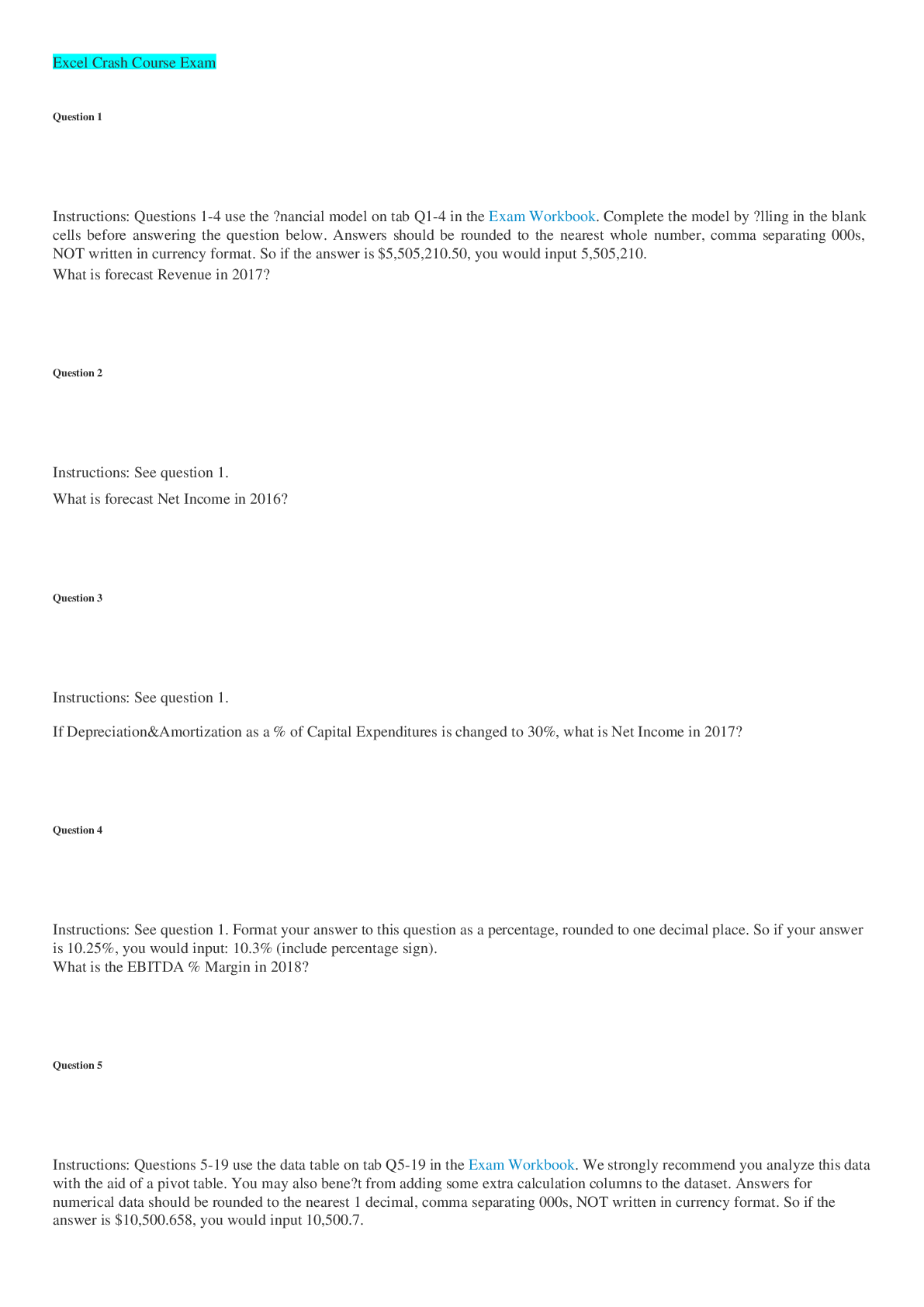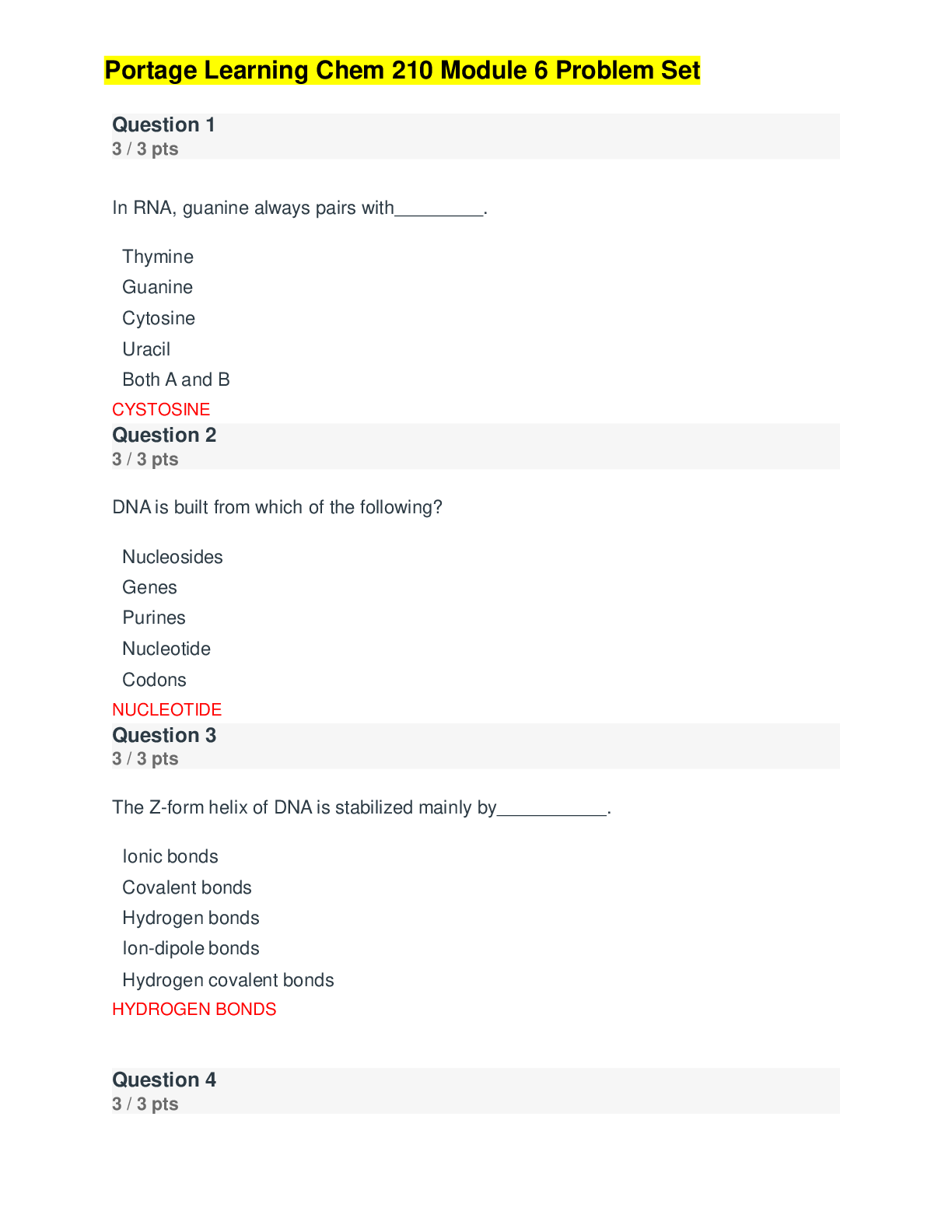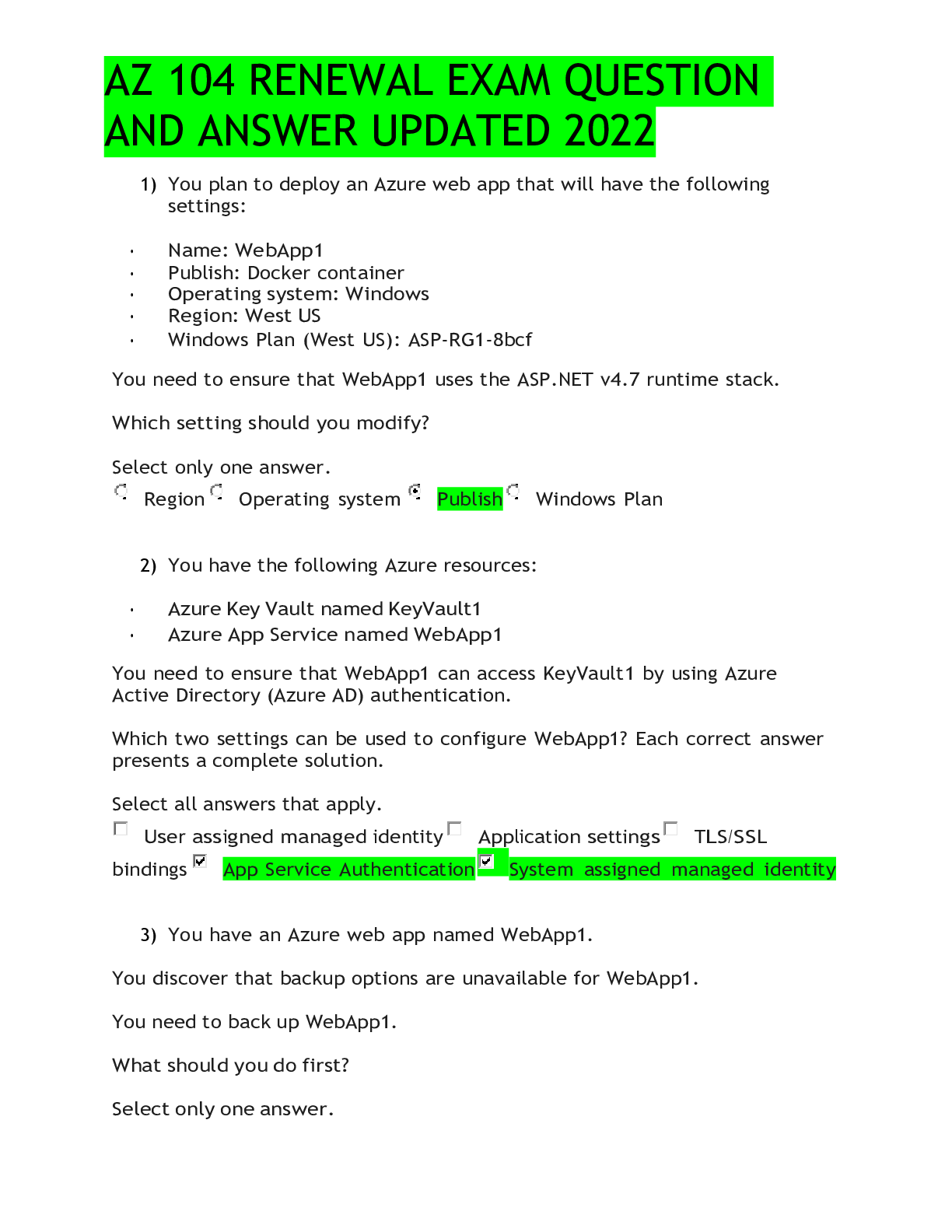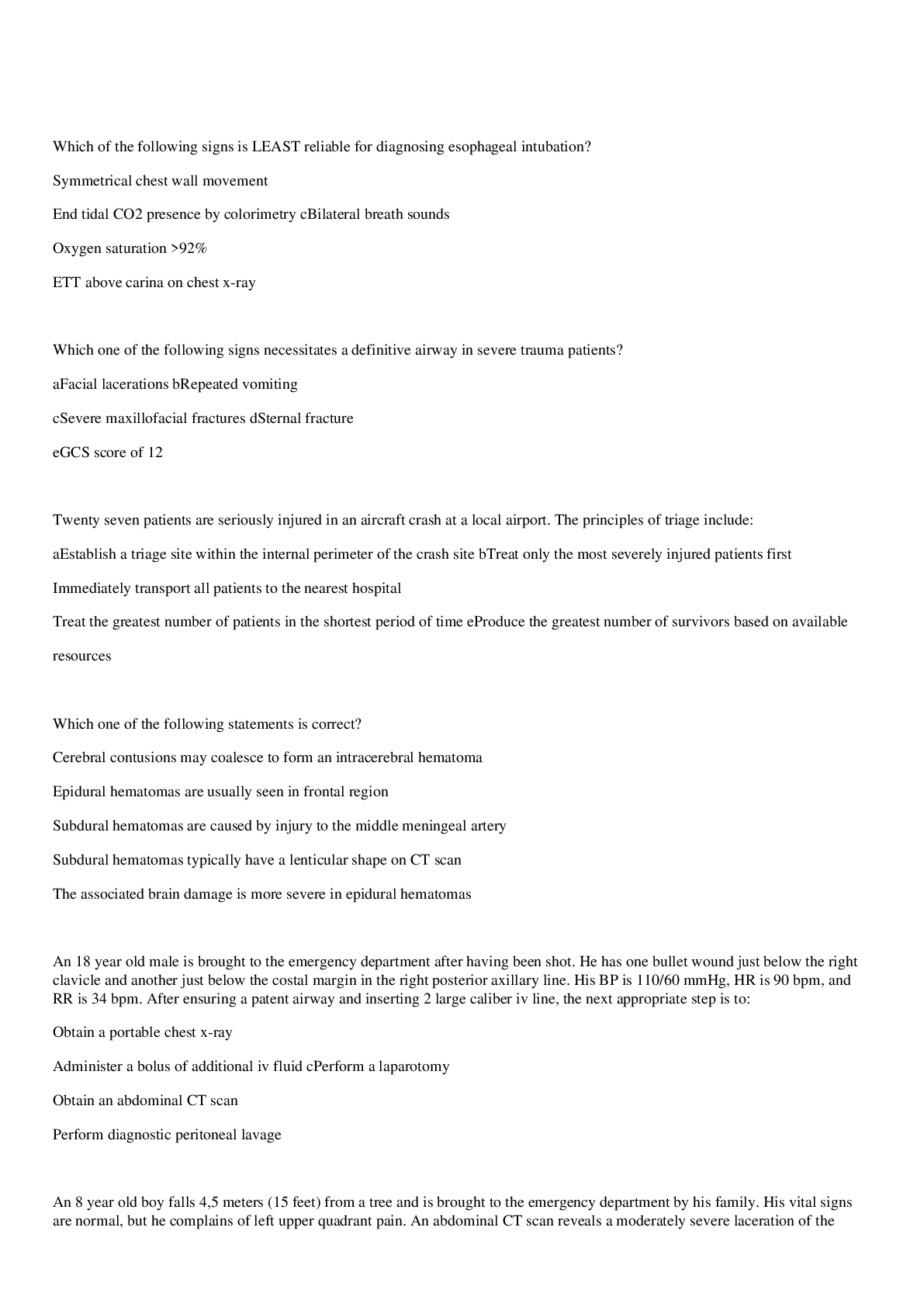Medical Studies > QUESTIONS & ANSWERS > Post-Test-ATLS 2021 QUSTIONSA AND ANSWERS (All)
Post-Test-ATLS 2021 QUSTIONSA AND ANSWERS
Document Content and Description Below
1. The primary indication for transferring a patient to a higher level trauma center is: unavailability of a surgeon or operating room staff. multiple system injuries, including severe h... ead injury. resource limitations as determined by the transferring doctor. resource limitations as determined by the hospital administration. widened mediastinum on chest x-ray following blunt thoracic trauma. 2. teen-aged bicycle rider is hit by a truck traveling at a high rate of speed. In the emergency department, she is actively bleeding from open fractures of her legs, and has abrasions on her chest and abdominal wall. Her blood pressure is 80/50 mm Hg, heart rate is 140 beats per minute, respiratory rate is 8 breaths per minute, and GCS score is 6. The first step in managing this patient is to: obtain a lateral cervical spine x-ray. insert a central venous pressure line. administer 2 liters of crystalloid solution. perform endotracheal intubation and ventilation. apply the PASG and inflate the leg compartments. 3. Contraindication to nasogastric intubation is the presence of a: gastric perforation. diaphragmatic rupture. open depressed skull fracture. fracture of the cervical spine. fracture of the cribriform plate. 4. Which one of the following statements regarding patients with thoracic spine injuries is TRUE? Log-rolling may be destabilizing to fractures from T-12 to L-1. Adequate immobilization can be accomplished with the scoop stretcher. Spinal cord injury below T-10 usually spares bowel and bladder function. Hyperflexion fractures in the upper thoracic spine are inherently unstable. These patients rarely present with spinal shock in association with cord injury. 5. young man sustains a ritle wound to the midabdomen. He is brought promptly to the emergency department by prehospital personnel. His skin is cool and diaphoretic, and his systolic blood pressure is 58 rnm Hg. Warmed crystalloid fluids are initiated without improvement in his vital signs. The next, most appropriate step is to perform: a celiotomy. an abdominal CT scan. diagnostic laparoscopy. abdominal ultrasonography. a diagnostic peritoneal lavage. 6. young woman sustains a severe head injury as the result of a motor vehicular crash. In the emergency department, her GCS score is 6. Her blood pressure is 140/90 mm Hg and her heart rate is 80 beats per minute. She is intubated and is being mechanically ventilated. Her pupils are 3 mm in size and equally reactive to light. There is no other apparent injury. The most important principle to follow in the early management of her head injury is to: administer an osmotic diuretic. prevent secondary brain inj [Show More]
Last updated: 1 year ago
Preview 1 out of 18 pages

Reviews( 0 )
Document information
Connected school, study & course
About the document
Uploaded On
Jul 12, 2022
Number of pages
18
Written in
Additional information
This document has been written for:
Uploaded
Jul 12, 2022
Downloads
0
Views
42












.png)

.png)




.png)
.png)

.png)





